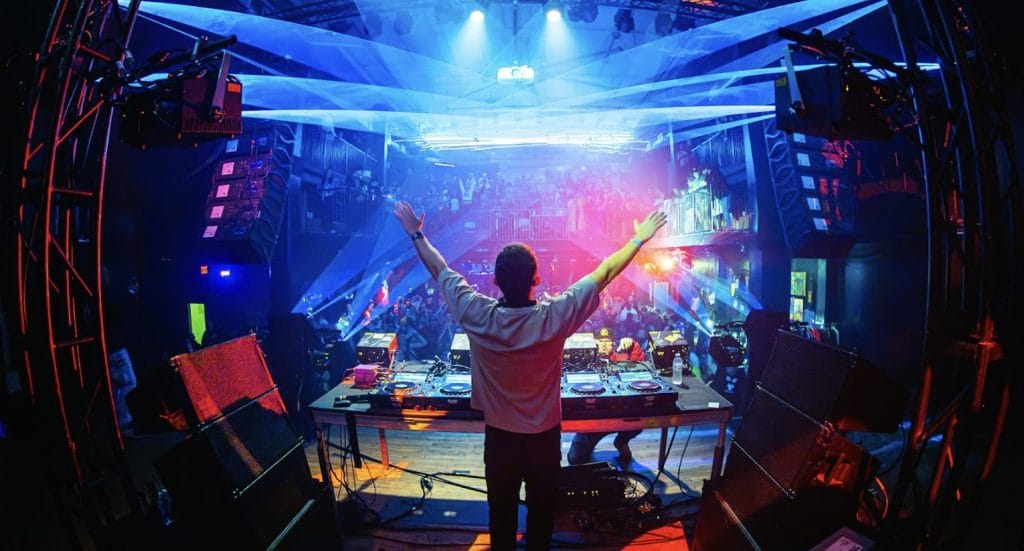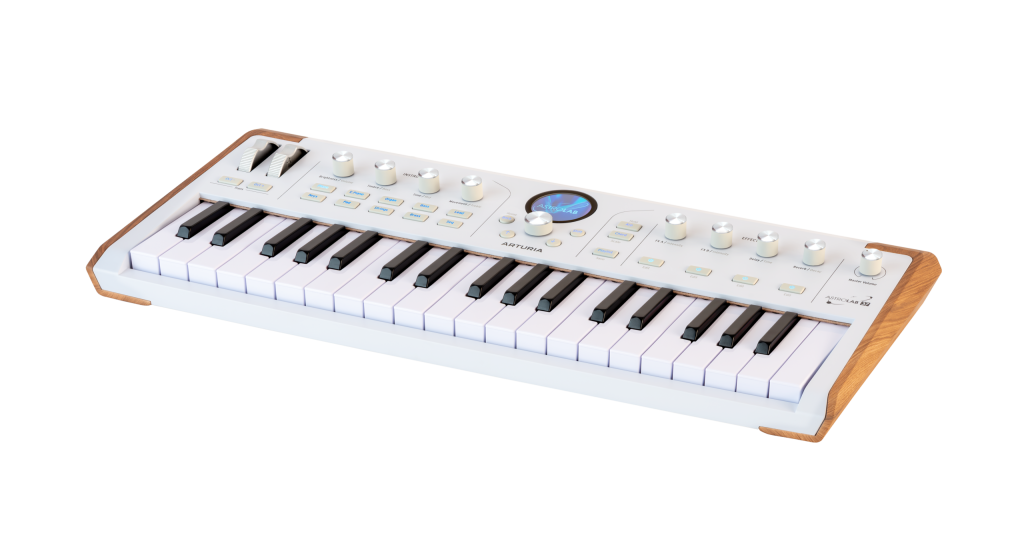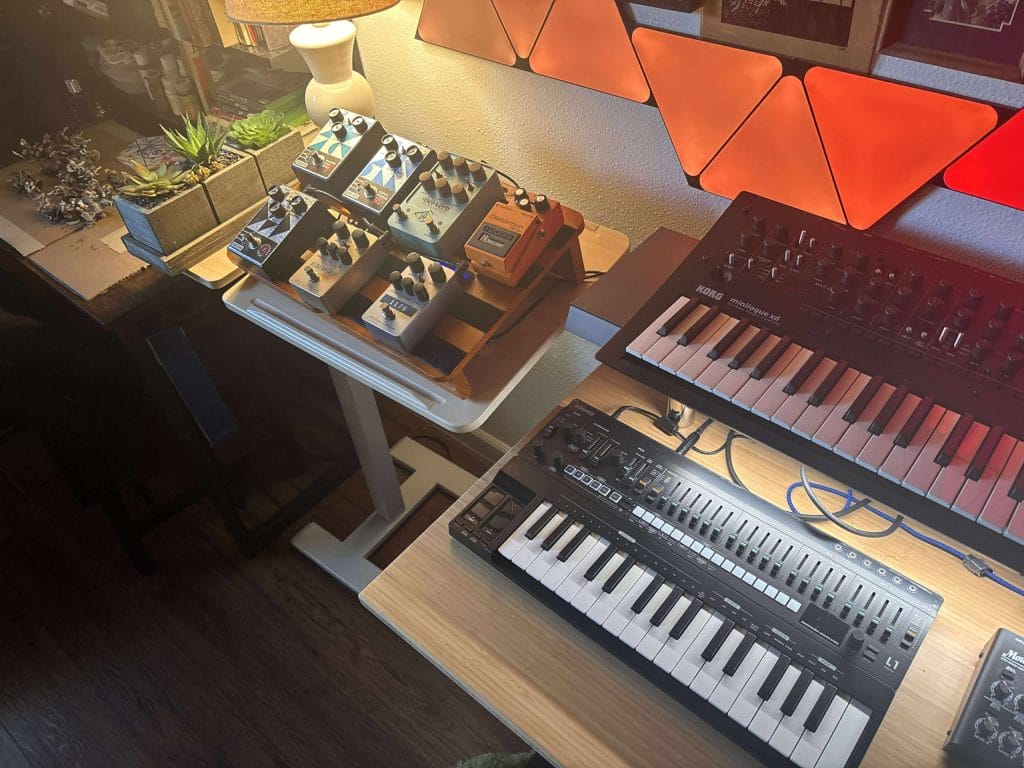Table of Contents
If you’ve spent any time rearranging gear in your home studio like I have, you already know how rare it is to find something that actually makes the process easier or the gear you use more accessible. I’ve tried everything from Ikea side tables to rolling carts, and most of them end up wobbly, scratched, or collecting dust after a few weeks.
I’ve even had a few side tables crack and break under the weight of just a couple synths, which was not a fun thing to come back to the studio and see (no synths were harmed though, thank god).
When Sihoo sent over their D01 Height Adjustable Side Table for review, I decided to test it in a real studio production setting. Not in a living room or bedroom, but in a working home studio where gear moves often and space is limited. Sure, they bill it as an ideal sidetable for nurses but let’s see how it handles a rack of guitar pedals and a few other bits and bobs I use for making blips and bloops.
This review focuses on how the D01 performs for music producers. I’ve been using it in a few different uses cases throughout my studio and I think I’ve locked in on what this thing does best. It’s worked well as a surface for patching synth pedals, a mobile station for lyric sheets during vocal takes, and even a temporary stand for desktop grooveboxes. It’s compact, adjustable, and easy to move around without disrupting your setup. Below, I’ve broken down its performance across several key areas, all based on daily use in an actual studio.
Setup and First Impressions

Assembly was super straightforward.
Everything needed to build the table came in the box, including tools and a clear, multi-language instruction booklet. I had it fully assembled in under 20 minutes without any hiccups (save I guess for screwing in the connector peice backwards, but that was entirely user-error due to wathcing a documentary on YouTube while I was putting this togeher).
Each part was labeled clearly, and they even included extra screws in case anything went missing. It’s a small touch, but it makes a difference if you’ve ever built budget studio furniture that came up short on hardware.
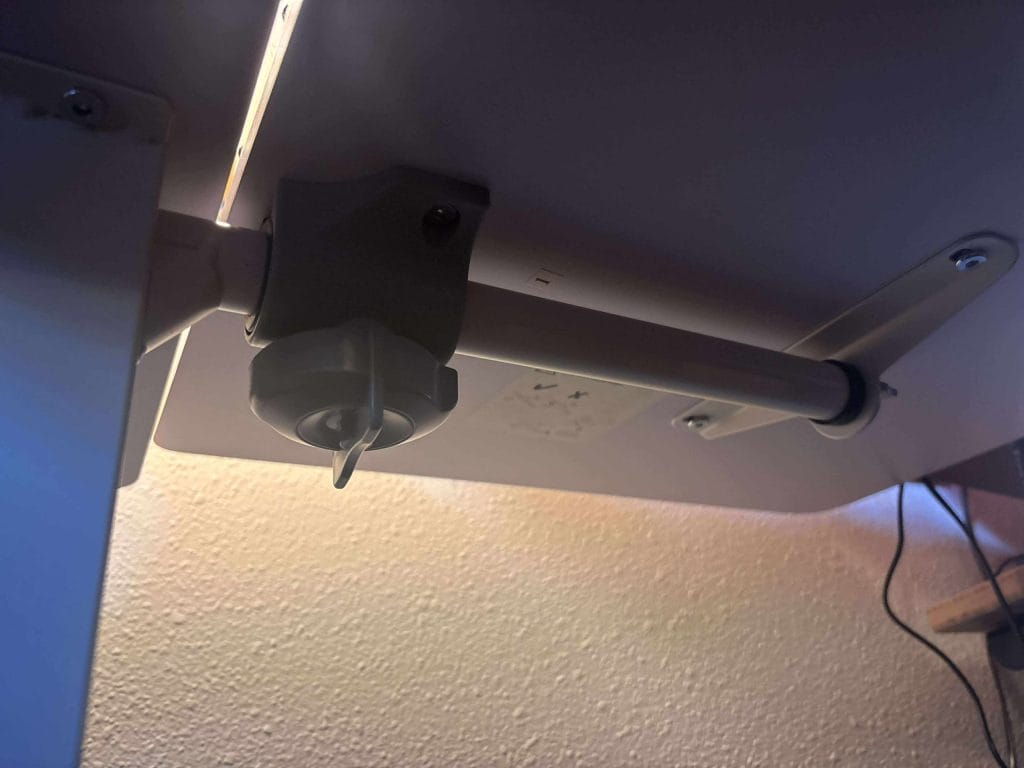
Once it was built, the table felt more stable than I expected and really can hold its weight once you make the right adjustments. The weight distribution was solid, and the H-shaped base gives it a wider footprint than most narrow-legged rolling carts. This helped the entire structure feel balanced, even before loading it with gear. There was no wobble, no loose fittings, and no sharp edges that needed sanding or adjusting which was really cool to see.
Visually, the D01 has a simple and neutral look.
The model I received for review came in white, which isn’t the typical color palette of my studio. I usually prefer darker tones that blend better with black racks and wood furniture, but hey, they sent me it to check out, so I’m not complaining – just commenting. Because of that, I checked their product page and saw they also offer walnut and maple finishes. If I were buying one myself, I’d go with the darker wood finish. I think it would look great in most music studio environments and blend in better with the gear.
First impressions were great overall. The table looked clean and modern, and it didn’t take up much visual space in the room. It felt like a practical tool, not a piece of furniture trying to do too much.
Build Quality and Materials
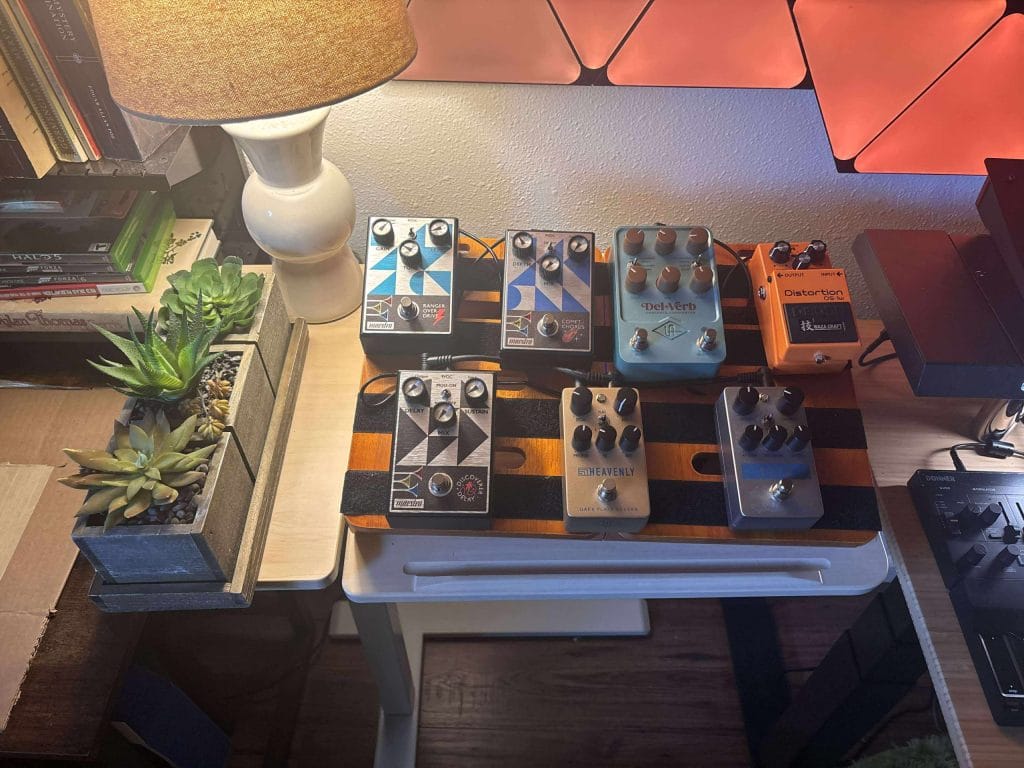
The Sihoo D01 uses melamine-faced chipboard for the tabletop. It’s smooth, easy to clean, and doesn’t bend under pressure. I’ve had everything from a 25-key controller to a full set of pedals sitting on it (which is where I landed on for long-term use of this desk), and it held up without any flexing or shifting. The surface is wide enough to use as a temporary workspace without dominating the room.
One thing I appreciated right away was the rounded corners. I’ve cut myself on sharp-edged tables before, especially in tight studio setups where you’re constantly reaching and turning. Plus, as often as I tell my toddler that he isn’t allowed to be in the studio without me, he sometimes sneaks in and sharp corners are the last thing I need to worry about if he gets to be on the loose. The D01 avoids that with soft, beveled edges that are safer and more comfortable. There’s also a groove for pens or cables, and an anti-slip strip that keeps laptops and small gear from sliding when the surface is tilted.
The H-shaped base is one of the best design decisions on this table.
Most overbed tables or mobile carts use a narrow center support that makes them prone to tipping. The wider H-shape increases contact with the floor, adds more lateral stability, and creates a low center of gravity that helps the table stay upright during movement.
Overall, the materials and construction feel intentional. It’s not made from premium hardwood or metal, but it doesn’t need to be. It’s solid, safe, and built to be used regularly.
Studio Use Cases and Ergonomics
This table fits into a music production workflow in a lot of different ways. The adjustable height range from 27 to 41 inches gives you room to use it seated, standing, or next to a couch. The surface tilts up to 60 degrees on both sides, so you can angle it for writing, drawing, or working with gear that needs better viewing angles.
I used it to hold printed lyrics while tracking vocals and was able to move it close to my mic stand without any awkward angles. The height range made it easy to match the mic’s position without blocking cables or other gear. I’ve also used it as a pedalboard rack next to my synth desk. It gave me room to patch in new signal chains without needing to pull out heavier racks or commit to permanent positions.
The tabletop has two sections: a main surface that tilts and a side panel that stays flat. This design is more useful than I expected. I’ve kept things like a phone, drink, or metronome on the static side, while the angled surface held pedals or my laptop. It’s convenient having those two zones available without needing two different tables.
What makes this table feel ergonomic is the ability to move and adapt it without resetting your entire session. I can roll it across the room to a different workstation, match its height to my main desk, and use it for entirely different tasks without unplugging anything or clearing space.
Mobility and Practicality

The D01 is designed to move, and that’s one of its biggest strengths in a home studio. The four casters at the base roll smoothly on hard surfaces like tile or wood. I’ve moved the table mid-session with gear on top and didn’t run into any snags or wobbles. It feels balanced and stable during movement.
On carpet, it’s a different story. The wheels are small and can struggle with thicker rugs or uneven flooring. If you’re working in a carpeted room, it will still move, but you’ll need to put in a bit more effort. For most studio setups with hard flooring or thinner rugs, though, the current wheels are fine.
One thing I would like to see added in future versions is wheel locks. Right now, all four wheels move freely. That’s not a major problem for lightweight use, but if you’re using it to hold MIDI controllers, samplers, or heavy pedals, the ability to lock it in place would make a difference. I haven’t had it slide away during a session, but I could see that being an issue in some setups.
Even without locking wheels, it’s still a practical solution for anyone who rearranges their space often. It lets you expand your studio layout temporarily without needing to rewire or rebuild your workspace.
Final Thoughts On The Sihoo D01
At $149.99, the Sihoo D01 is priced fairly for what it offers. You’re getting a durable, adjustable, mobile side table that supports studio workflows without cluttering your space. It’s not trying to replace your main desk, and it doesn’t need to. It’s meant to support the session in progress, wherever that takes place in the room.
There are a few areas where it could improve. Adding locking wheels would make it more secure when used for heavier gear or aggressive playing styles. A quicker tilt adjustment system would be helpful if you’re switching between writing and playing modes frequently. But those are small upgrades, not dealbreakers.
The D01 has held up in daily use. I’ve used it for patching pedals, holding controllers, tracking vocals, and managing session overflow. It’s moved between three different zones in my studio and filled a different role in each one. That level of utility is rare in any piece of furniture, let alone something that costs under $200.
If you work in a tight space and constantly find yourself juggling gear, this is worth looking at. It adds surface area and flexibility without asking for a permanent footprint or redesign of your room.
The post Sihoo D01 Review – A Moveable Studio Surface That Actually Holds Up appeared first on Magnetic Magazine.



